
Thomas Stearns Eliot was a poet, essayist, publisher, playwright, literary critic and editor. He is considered to be one of the 20th century's greatest poets, as well as a central figure in English-language Modernist poetry. His use of language, writing style, and verse structure reinvigorated English poetry. He is also noted for his critical essays, which often reevaluated long-held cultural beliefs.
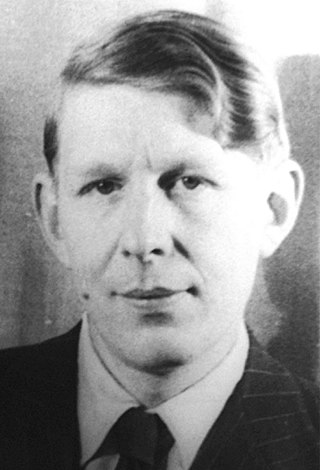
Wystan Hugh Auden was a British-American poet. Auden's poetry is noted for its stylistic and technical achievement, its engagement with politics, morals, love, and religion, and its variety in tone, form, and content. Some of his best known poems are about love, such as "Funeral Blues"; on political and social themes, such as "September 1, 1939" and "The Shield of Achilles"; on cultural and psychological themes, such as The Age of Anxiety; and on religious themes, such as "For the Time Being" and "Horae Canonicae".

David Herbert Lawrence was an English novelist, short story writer, poet, playwright, literary critic, travel writer, essayist, and painter. His modernist works reflect on modernity, social alienation and industrialization, while championing sexuality, vitality and instinct. Several of his novels, Sons and Lovers, The Rainbow, Women in Love, and Lady Chatterley's Lover, were the subject of censorship trials for their radical portrayals of sexuality and use of explicit language.
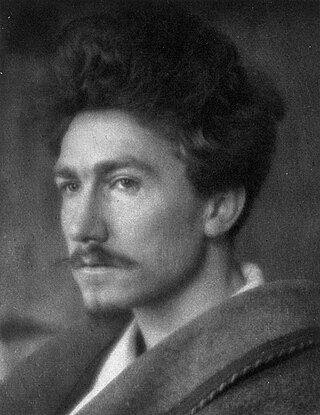
Imagism was a movement in early-20th-century poetry that favored precision of imagery and clear, sharp language. It is considered to be the first organized modernist literary movement in the English language. Imagism has been termed "a succession of creative moments" rather than a continuous or sustained period of development. The French academic René Taupin remarked that "it is more accurate to consider Imagism not as a doctrine, nor even as a poetic school, but as the association of a few poets who were for a certain time in agreement on a small number of important principles".
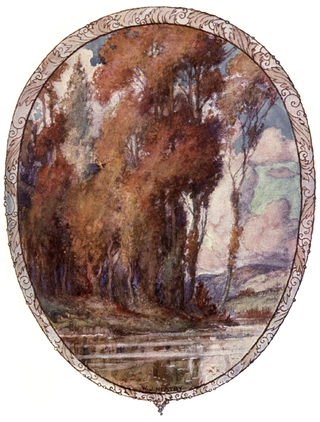
"To Autumn" is a poem by English Romantic poet John Keats. The work was composed on 19 September 1819 and published in 1820 in a volume of Keats's poetry that included Lamia and The Eve of St. Agnes. "To Autumn" is the final work in a group of poems known as Keats's "1819 odes". Although personal problems left him little time to devote to poetry in 1819, he composed "To Autumn" after a walk near Winchester one autumnal evening. The work marks the end of his poetic career, as he needed to earn money and could no longer devote himself to the lifestyle of a poet. A little over a year after the publication of "To Autumn", Keats died in Rome.

Edgar Lee Masters was an American attorney, poet, biographer, and dramatist. He is the author of Spoon River Anthology, The New Star Chamber and Other Essays, Songs and Satires, The Great Valley, The Serpent in the Wilderness, An Obscure Tale, The Spleen, Mark Twain: A Portrait, Lincoln: The Man, and Illinois Poems. In all, Masters published twelve plays, twenty-one books of poetry, six novels and six biographies, including those of Abraham Lincoln, Mark Twain, Vachel Lindsay, and Walt Whitman.
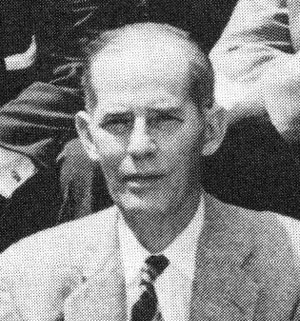
Donald Grady Davidson was an American poet, essayist, social and literary critic, and author. An English professor at Vanderbilt University from 1920 to 1965, he was a founding member of the Fugitives and the overlapping group Southern Agrarians, two literary groups based in Nashville, Tennessee. He was a supporter of segregation in the United States.

John Orley Allen Tate, known professionally as Allen Tate, was an American poet, essayist, social commentator, and poet laureate from 1943 to 1944. Among his best known works are the poems "Ode to the Confederate Dead" (1928) and "The Mediterranean" (1933), and his only novel The Fathers (1938). He is associated with New Criticism, the Fugitives and the Southern Agrarians.

Kenneth Charles Marion Rexroth was an American poet, translator, and critical essayist. He is regarded as a central figure in the San Francisco Renaissance, and paved the groundwork for the movement. Although he did not consider himself to be a Beat poet, and disliked the association, he was dubbed the "Father of the Beats" by Time magazine. Largely self-educated, Rexroth learned several languages and translated poems from Chinese, French, Spanish, and Japanese.
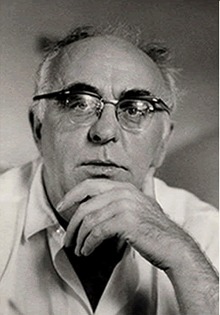
Charles Olson was a second generation modernist American poet who was a link between earlier modernist figures such as Ezra Pound and William Carlos Williams and the third generation modernist New American poets. The latter includes the New York School, the Black Mountain School, and some of the artists and poets associated with the Beat generation and the San Francisco Renaissance.

Edward Merton Dorn was an American poet and teacher often associated with the Black Mountain poets. His most famous work is Gunslinger.
"Gerontion" is a poem by T. S. Eliot that was first published in 1920 in Ara Vos Prec and Poems. The title is Greek for "little old man," and the poem is an interior monologue relating the opinions and impressions of an elderly man, which describes Europe after World War I through the eyes of a man who has lived most of his life in the 19th century. Two years after it was published, Eliot considered including the poem as a preface to The Waste Land, but was talked out of this by Ezra Pound. Along with "The Love Song of J. Alfred Prufrock" and The Waste Land, and other works published by Eliot in the early part of his career, '"Gerontion" discusses themes of religion, sexuality, and other general topics of modernist poetry.
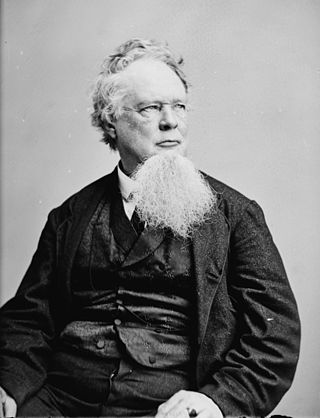
William Gilmore Simms was a poet, novelist, politician and historian from the American South. His writings achieved great prominence during the 19th century, with Edgar Allan Poe pronouncing him the best novelist America had ever produced. He is still known among literary scholars as a major force in antebellum Southern literature. He is also remembered for his strong support of slavery and for his opposition to Uncle Tom's Cabin, in response to which he wrote reviews and the pro-slavery novel The Sword and the Distaff (1854). During his literary career he served as editor of several journals and newspapers and he also served in the South Carolina House of Representatives.

Jean Toomer was an American poet and novelist commonly associated with the Harlem Renaissance, though he actively resisted the association, and with modernism. His reputation stems from his novel Cane (1923), which Toomer wrote during and after a stint as a school principal at a black school in rural Sparta, Georgia. The novel intertwines the stories of six women and includes an apparently autobiographical thread; sociologist Charles S. Johnson called it "the most astonishingly brilliant beginning of any Negro writer of his generation". He resisted being classified as a Negro writer, as he identified as "American". For more than a decade Toomer was an influential follower and representative of the pioneering spiritual teacher G.I. Gurdjieff. Later in life he took up Quakerism.

Archibald Randolph Ammons was an American poet and professor of English at Cornell University. Ammons published nearly thirty collections of poems in his lifetime. Revered for his impact on American romantic poetry, Ammons received several major awards for his work, including two National Book Awards for Poetry, one in 1973 for Collected Poems and another in 1993 for Garbage.
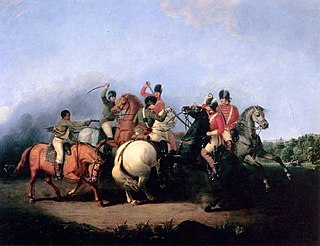
The southern theater of the American Revolutionary War was the central theater of military operations in the second half of the American Revolutionary War, 1778–1781. It encompassed engagements primarily in Virginia, Georgia, North Carolina, and South Carolina. Tactics consisted of both strategic battles and guerrilla warfare.

Aram Saroyan is an American poet, novelist, biographer, memoirist and playwright, who is especially known for his minimalist poetry, famous examples of which include the one-word poem "lighght" and a one-letter poem comprising a four-legged version of the letter "m".
This is a bibliography of books, plays, films, and libretti written, edited, or translated by the Anglo-American poet W. H. Auden (1907–1973). See the main entry for a list of biographical and critical studies and external links. Dates are dates of publication of performance, not of composition.

Mont Blanc: Lines Written in the Vale of Chamouni is an ode by the Romantic poet Percy Bysshe Shelley. The poem was composed between 22 July and 29 August 1816 during Shelley's journey to the Chamonix Valley, and intended to reflect the scenery through which he travelled. "Mont Blanc" was first published in 1817 in Percy Shelley and Mary Shelley's History of a Six Weeks' Tour through a Part of France, Switzerland, Germany and Holland, which some scholars believe to use "Mont Blanc" as its culmination.

The T. S. Eliot bibliography contains a list of works by T. S. Eliot.

















